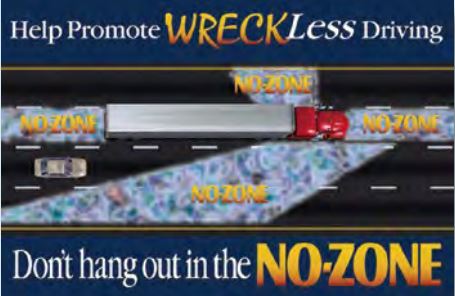Driver education is the beginning of the process of learning to drive, but teens need many, many hours of practice to become safer drivers.
Tips for Supervising Teen Driving
PRACTICE, PRACTICE, PRACTICE!! Practice as much as possible, even after your teen gets their license.
- Who: Practice with only you and your teen in the vehicle. Other people, pets, etc. can distract both of you and increase stress. Remember, remain calm and focused; making mistakes is part of learning, and practice driving is serious, but it should also be interesting and engaging.
- What: Practice the driving skills that your teen is learning also. Begin with basic skills such as turning, parking, and backing up. Then, practice more complex skills such as changing lanes and merging.
- When: In the beginning, practice during daylight hours with good weather. As your teen's skills increase, gradually expose them to different roads, weather conditions, and times of day.

- Where: In the beginning, practice in safe, low-risk driving areas. Start out in empty parking lots or on remote roads. As your teen's skills increase, progress to quiet neighborhood streets and later to busier roads and highways.
- Why: Learning to drive is a complex, ongoing process requiring responsibility and dedication from both parents and teens. New drivers need a lot of practice to handle daily driving hazards and unexpected situations. Teens will show the greatest improvement in the first 1,000 to 5,000 miles of driving.
The leading cause of death among 15-20 year olds in Oregon is motor vehicle collisions.
Use a Practice Driving Log
Use the practice driving log to track your teen's practice driving and progress toward becoming a safe driver!
Have Your Teen Do These Steps Each Time When Practicing
- Be in the “practicing mood". Practice when both you and your teen are ready, in good moods, have sufficient time, and are well rested.
- Adjust mirrors, safety belts, seats, and steering wheel position before starting the vehicle.
 Always wear safety belts and use headlights day and night!
Always wear safety belts and use headlights day and night!- Come to a complete stop at stop signs and for right turns at red lights.
- Look left, then front (straight ahead), then right before proceeding from a stop.
- Keep eyes moving and use the mirrors to check around and behind the vehicle every 6-8 seconds.
- Keep at least a 2-4 second space between your vehicle and others in traffic flow. Try to stay centered in the lane of travel.
- Avoid the “No-Zone" with trucks or buses. This is about 15 feet on all sides of the truck. If you cannot see truck drivers in their mirrors, they cannot see you either.
- Be aware—Speed increases braking distance. Doubling your speed will quadruple your braking distance. The faster you're going the longer it takes to stop.
- Be aware—Vehicle weight increases braking distance. Doubling your vehicle weight will double your braking distance. If you are driving a large vehicle or towing a trailer it takes longer to stop.
